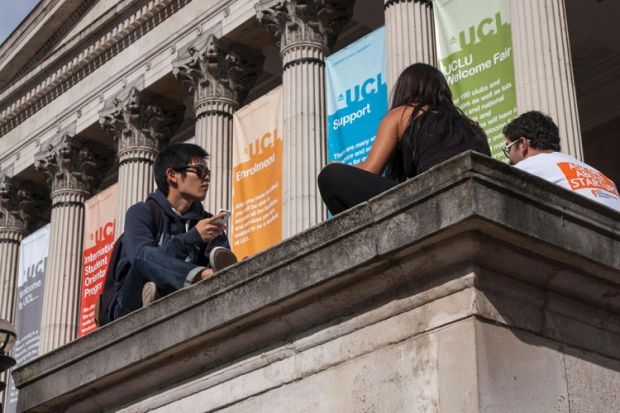Source: Alamy
On top: Russell Group entry varies by London borough despite similar grades
Pupils in some London boroughs are three times less likely to attend a Russell Group institution than other young Londoners with the same grades, a new study shows.
While school-leavers in London are far more likely to attend university than those elsewhere in the UK, entry rates to Britain’s most selective universities are hugely uneven across the capital, according to an analysis by the school outreach organiser AccessHE.
The variations in entry to Russell Group universities cannot be wholly explained by differences in attainment between boroughs, says the report, Social Mobility in London: The Role of Higher Education.
Just 4 per cent of school-leavers in the South London borough of Croydon gained a place at a Russell Group university, despite that cohort achieving an average of 763 points in level 3 qualifications, according to a Department for Education measure for assessing attainment in A levels and their equivalents.
In contrast, in Brent in northwest London, 15 per cent gained Russell Group places despite the borough’s average level 3 score, at 754, being roughly the same, the report says.
Redbridge in northeast London sent 14 per cent of its students to the Russell Group (average level 3 score: 744), as did Merton in southwest London (7 points). But just 3 per cent of Waltham Forest students did likewise, despite better-than-average exam scores (768).
Heavy outreach by the Russell Group in some parts of London may explain why entry rates were higher in those areas, said the study’s author, Graeme Atherton.
“There is a lot of good collaborative engagement by universities in Brent and that area does very well comparatively,” said Dr Atherton, director of AccessHE. “Barnet [with an 18 per cent entry rate] does particularly well and it focuses its engagement on the Russell Group.”
Subject and qualification choice may help to explain differences in Russell Group entry levels between boroughs with similar achievement levels, he noted. “In Islington, most post-16 provision is at City of Islington College, and further education doesn’t do as well as schools in sending pupils to selective universities.”
Ethnicity, local university provision and social class may be factors in pupils’ decisions to apply, he said, adding: “You could ask how Russell Group universities are viewed by some potential applicants.”
The study, sponsored by India’s Amity University, highlighted the rising demand for higher education in an increasingly multiracial city.
In 2010, 62 per cent of applications from London were from ethnic minority students. Those running outreach programmes need to consider how they are engaging with different groups, said Dr Atherton.
Register to continue
Why register?
- Registration is free and only takes a moment
- Once registered, you can read 3 articles a month
- Sign up for our newsletter
Subscribe
Or subscribe for unlimited access to:
- Unlimited access to news, views, insights & reviews
- Digital editions
- Digital access to THE’s university and college rankings analysis
Already registered or a current subscriber? Login




